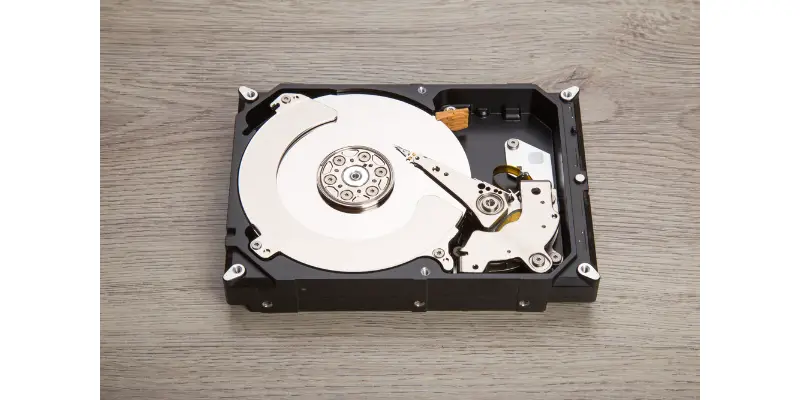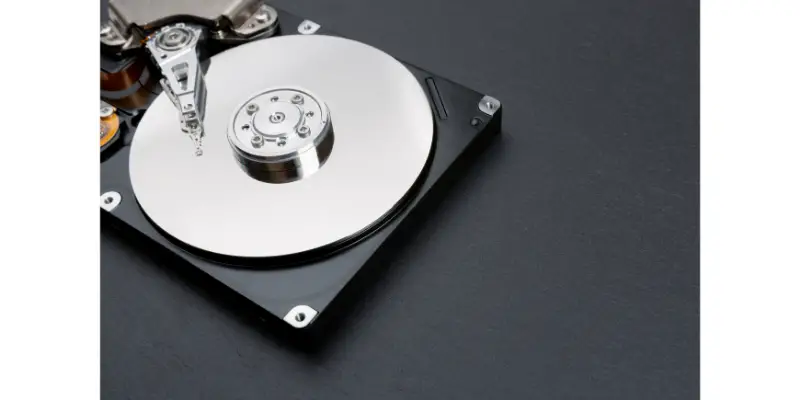Disclaimer: This post may contain affiliate links, meaning we get a small commission if you make a purchase through our links, at no cost to you. For more information, please visit our Disclaimer Page.
Have you ever wondered if your Hard Disk Drive (HDD) is hot swappable?
Any SATA, SAS, or FireWire hard drive is hot-swappable, which is most of the hard drives on the market. Whether an HDD is hot-swappable or not depends on the port or bay on the system more than the HDD proper. If the system has hot-swappable bays, chances are you can hot-swap the drive.
Table of Contents
What Is Hot Swapping?
Hot swapping is the process where you replace an active component of a computer or similar system without shutting off the power. You may have had someone warning you that you should never play with the motherboard of a computer while the power is on. Because you run the risk of getting shocked.
Hot swapping goes against that principle. With a hot-swappable system, you are allowed to swap out parts while the power is still on. This way you can make changes to live systems where you cannot afford to stop the computer.
Typically, you are able to hot-swap the hard drive, SSD, USB, CD, etc. But you cannot swap out the RAM, processor, or graphics card unit (GPU). Hence, these parts are what we call “cold-pluggable” parts as they can be changed only when the power is completely cut off.
Are All HDD Hot Swappable?
There are two factors that determine whether a hard drive is hot-swappable or not – the external bus interface (EBI) on the hard drive and the actual port or bay that you connect the hard drive to.
Most of the HDD (hard disc drives) you will find on today’s market will belong to a few standards. These standards are SATA, SAS, FireWire, etc. These standards are based on the interface on the connecting point of the hard drive. And all of them are hot-swappable.
Meaning if you have a hard drive with a SATA or SAS interface, you can be pretty sure that it will be hot-swappable. And since pretty much all the drives on the market use this interface, you are covered as far as hot-swappable hard drives go.
Now for the other part of that equation, the connecting bay or port. This is the designated area on your device or system’s mainframe or motherboard where you plug in the hard drive. If that bay is hot-swappable, you will be able to exchange the hard drive without stopping the power.
How Do You Know If Your Hard Drive Is Hot Swappable?
As we mentioned, most of the hard drives you find will be hot-swappable. But you can never be too careful. So, it is best to make sure that is the case before you temper with an active system.
There are a couple of things you can check to verify whether you can hot-swap your hard drive or not. The first is on the drive itself. Grab your hard drive and check to see if there are any purple tabs on the body. If there are, you can be certain the drive is hot-swappable.
The other thing you need to ensure is concerning the storage type of the drive. If the drive utilizes a RAID setup, it is swappable. And similar to the interface mentioned before, almost all the hard drives you find are on this setting. But just make sure this is indeed the case by reading the label or asking your supplier.
Similarly, when buying or installing the system, you can ask the technician or the supplier if the system has hot-swap bays. If it does not, you can ask them to put only hot-swap ports in so that you can change your drives on the fly.
If the hard drive is only cold-pluggable, you need to stop the power supply before changing it. Otherwise, you may damage the drive, your system, and yourself.
Where Are Hot Swappable Hard Drives Used?
Hot-swappable drivers are frequently used in systems that need to run all throughout the day. You will find these systems in factories that use an automated production line or a company that provides continuous online services.
Is Hot Swappable Hard Drive Good?
Hot-swappable hardware is all the rave right now and for good reasons. But some might still be concerned about the whole thing. So, let’s look at the pros and cons of a hot-swappable hard drive and evaluate whether or not they are worth it.
Replace Failed Drive Storages
If there is any problem with the driver, you will be able to replace it with a new one. Now, this sort of system usually has multiple drivers. So, when you change one driver, as long as the power is going, the data will be saved on the other driver. And you can freely replace the failed drive storage.
Non-Stop Service
Large industries, software companies, or online service providers require multiple storage units to house all their data. And they need to continuously supply their customers with their service, a lot of them are active 24/7. For instance, Google provides their service non-stop as pausing for even a couple of hours can have huge financial implications.
So, if there is any problem with the system these companies use, they would need to stop the entire process, especially if their system is cold-pluggable. The same goes for surveillance units and 24-hour monitoring. These services need to go on without stopping for a second.
And that is where the hot-swappable hard drive comes into play. Because if there is any problem with the storage or you need to upgrade your current storage capacity, you will be able to do so without shutting down the entire operation.
Zero Downtime
Downtime is the time you lose when repairing and maintain a system or a server. In many manufacturing facilities, hard drive failure is a common occurrence. This can happen due to airborne contaminants, high temperatures, or vibrations.
Now if the system did not have a hot-swappable storage system, it would lose hours of productivity trying to fix the issue. You would have to shut off the power, open up the casing, send it to the technician for repair, and wait for them to deliver.
But with flexible hard drives, you can cut this downtime to practically zero. Your technician can work on the problem as the system carries on.
Quick And Simple
Replacing a hot-swappable hard drive is much simpler than the alternative. Plus, you can get the job done significantly quicker. You will also be able to test out the changes to see if they had any effect almost instantly.
Add an Extra Storage Anytime
Most systems will have additional slots for hard drives. Now, with a cold system, you would need to invest significant time to add the extra storage drive. But with the hot and flexible system, you can add one or two hard drives at any time, at your leisure.
Cons of using a Hot Swappable Hard Drive
Sometimes, when you swap out the hard drive in a hot-swappable setup, the system fails to detect the new driver. This sort of situation can occur if the driver does not fit properly with the hot-swap bay.
Should You Use Hot Swappable Hard Drives?
Despite that last point we mentioned, a hot-swappable system is entirely beneficial to all parties involved. It saves you downtime, keeps your business going even during a malfunction, allows you to upgrade an active system, and so much more. A hot-swappable hard drive just adds so much flexibility to your system.
Conclusion
A hot-swappable hard drive just adds so much flexibility to your system. So, if you have the option, you should always go with a hot-swappable hard drive.


